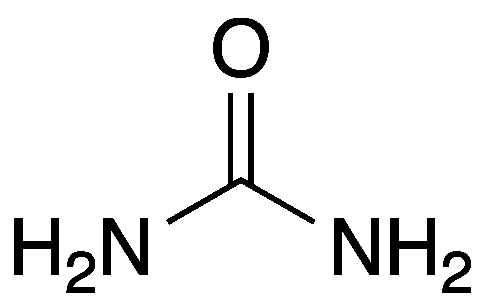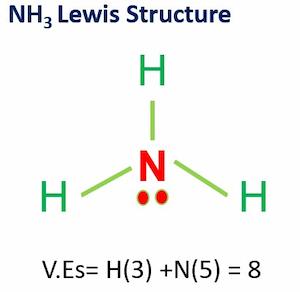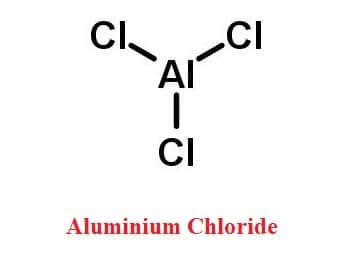Urea, also known as carbamide, is a chemical compound with the formula CO(NH2)2.
It is a colourless and odourless solid that is highly soluble in water and is almost non-toxic. Urea is a nitrogen (N) source that is widely used in fertilizers and is an important raw material in the chemical industry.

| Compound name | Urea |
| Empirical formula | CH4N2O |
| Appearance | White crystals or powder |
| Melting point | 133–135 ºC |
| Water solubility | 1.1 kg/L |
| Hazard class | Not a hazardous substance or mixture |
Table of Contents
Urea as Fertilizer
Urea contains the most nitrogen of any industrial chemical and is in high demand as a fertilizer.
In the soil, urea decomposes in the soil to form ammonia (actually ammonium ion) and carbon dioxide. Nitrogen-fixing bacteria oxidize ammonium to nitrate, which is readily absorbed by crop roots. Aside from its high nitrogen content, urea is particularly useful because it can be applied as a solid in the form of pellets, and its unusually high solubility in water allows it to be incorporated into solutions with other plant nutrients.
Furthermore, more than 90% of urea production goes into agriculture.
Urea in Simple Words
- Urea is an organic compound.
- It is made up of carbon, nitrogen, oxygen, and hydrogen atoms.
- It is commonly found in the urine of mammals.
- Urea can also be produced synthetically.
- Urea is used as a fertilizer in agriculture.
- It is used in the production of plastics, resins, and adhesives.
- Urea is also used in the production of animal feed and pharmaceuticals.
- It is a component of some types of cleaning products.
Real-Life Significance of Urea
| Daily Life Significance of Urea | Examples |
| Waste Elimination | Urea is a major component in urine, which is eliminated from the body on a daily basis as a waste product, helping to regulate the body’s chemical balance and prevent the buildup of harmful toxins. |
| Agriculture | Urea is commonly used as a fertilizer in agriculture, helping to increase crop yields and improve soil quality. It is also used in the production of animal feed, providing a source of protein and other essential nutrients for livestock. |
| Skin Care | Urea is a key ingredient in some types of skin care products, where it helps to moisturize and exfoliate the skin. |
| Manufacturing | Urea is used in the production of certain types of plastics, resins, and adhesives that are used in everyday items such as toys, furniture, and household appliances. It is also used in the manufacture of some types of textiles, helping to make fabrics more durable and resistant to wrinkles and stains. |
| Fuel | Urea is used in the production of some types of fuel, such as diesel exhaust fluid (DEF), which helps to reduce harmful emissions from diesel engines. |
| Cleaning Products | Urea is used in the production of some types of cleaning products, where it helps to remove dirt and stains from a variety of surfaces. |
Urea Molecular Geometry
Urea’s molecular structure is classified as an amide because it contains a nitrogen atom bound to one side of a carbonyl group. Urea contains two nitrogens, one on each side of the same carbonyl carbon. As a result, it is a double amide. Urea has planar geometry, which means that its atoms are all in the same plane. Except for the nonpolar bonds between carbon and oxygen and carbon and nitrogen, all of the bonds are covalent (electrons are shared between the atoms of each bond). The carbonyl group is urea’s functional group because it is responsible for the majority of the molecule’s chemical reactions.
Production of Urea
The general steps involved in the production of urea:
- Synthesis of Ammonia: The first step in the production of urea is the synthesis of ammonia gas, which is usually done using the Haber-Bosch process. This involves combining nitrogen gas from the air with hydrogen gas from natural gas or other sources under high pressure and temperature in the presence of a catalyst.
N2(g) + 3H2(g) ⇌ 2NH3(g) ΔH = -92.4 kJ/mol - Reaction with Carbon Dioxide: The next step is to react the ammonia gas with carbon dioxide in the presence of a catalyst to produce ammonium carbamate.
2NH3(g) + CO2(g) ⇌ NH2COONH4(aq) ΔH = -16.5 kJ/mol - Dehydration of Ammonium Carbamate: The ammonium carbamate is then heated under pressure to remove water and produce urea.
NH2COONH4(aq) → CO(NH2)2(aq) + H2O(l) ΔH = +33.9 kJ/mol
CO2(g) + 2NH3(g) → CO(NH2)2(aq) + H2O(l) ΔH = -117.8 kJ/mol
In the overall equation, CO(NH2)2(aq) represents urea in an aqueous solution.
The actual process also involves several intermediate steps and reactions to optimize the production efficiency and purity of the urea product. - Separation and Purification: The crude urea is then separated from the reaction mixture and purified using a series of processes such as cooling, centrifugation, and drying.
- Granulation: The purified urea is then formed into granules or prills of a specific size using a granulation process.
- Packaging and Storage: The final step is to package the urea granules into bags or other containers and store them in a dry and cool place until they are ready for use.
Properties of Urea
| Properties of Urea | Description |
| Physical State | White, odourless, crystalline solid at room temperature and pressure |
| Solubility | Highly soluble in water and forms a colourless, odourless solution. Also soluble in ethanol, methanol, and other polar solvents |
| Melting Point | 132.7 °C |
| Boiling Point | 200-220 °C |
| Density | 1.32 g/cm3 (solid urea) |
| pH | Weakly alkaline, around 8.0-9.0 for urea solutions |
| Reactivity | Stable under normal conditions but can react with acids, bases, and oxidizing agents. Can decompose at high temperatures or in the presence of water or acids to produce ammonia and carbon dioxide |
| Biodegradability | Biodegradable and can be broken down by microorganisms in the soil, water, or other natural environments |
| Hygroscopicity | Hygroscopic and can absorb moisture from the air, affecting the storage and handling of urea products |
Summary
- Urea CO(NH2)2 is widely used in fertilizers and is an important raw material in the chemical industry.
- Urea is neither acidic nor alkaline when dissolved in water.
- In Urea’s molecular structure, this amide has two –NH2 groups joined by a carbonyl (C=O) functional group.
- Urea is an important organic compound with many uses, including:
- As a nitrogen-rich fertilizer.
- As a feedstock for the production of other chemicals.
- As a component in certain skincare products.
- As a component in clinical diagnostic tests.
More Links
N2O Lewis Structure| Laughing Gas
CO2 Lewis Structure and Molecular Geometry
SO2 (Sulfur Dioxide) Lewis structure
SiO2 Lewis Structure| Step By Step Construction
NH3 Lewis Structure & Molecular Geometry
Is HCl Polar or Nonpolar?
CH4 Lewis Structure & Molecular Geometry
Frequently Asked Questions (FAQs)
1. What is a sigma bond?
In chemistry, sigma bonds (bonds) are the strongest type of covalent chemical bond. Atomic orbitals colliding head-on produce them. The symbol for a sigma bond is σ
Sigma bonds are the strongest covalent bonds because the relevant orbitals are directly overlapping. Electrons are the electrons that are involved in forming a connection.
Sigma bonds are the strongest covalent bonds because the relevant orbitals are directly overlapping. The electrons that are involved in a bond are known as electrons.
2. What is Sodium Sulfate?
The sodium salt of sulfuric acid is sodium sulfate. It has the formula Na2SO4 and is an inorganic chemical.
It is mostly utilized in the production of detergents and in the Kraft process of paper pulping. It exists in all forms as white solids that are very water-soluble. With an annual output of 6 million tonnes, decahydrate is an important commodity chemical product.
3. What is sulfur electronic configuration?
Sulfur electronic configuration is 1s2 2s2 2p6 3s2 3p4
4. What is CLF3 molecular geometry?
ClF3 has a T-shaped molecular geometry and trigonal bipyramidal electron geometry. This molecule has two lone pairs and three bound pairs, according to the ClF3 Lewis structure. ClF3 is a polar compound.
5. What is Sulfur hexafluoride?
Sulfur hexafluoride (SF6) is a non-toxic gas that is used in a variety of applications due to its inert properties. While SF6 is non-toxic when used properly, toxic byproducts can be produced during electrical discharges within SF6-filled equipment, posing a threat to the health of workers who come into contact with them.
6. What is Sulfur trioxide?
SO3 (sulfur trioxide) is a chemical compound. It is available in three forms: gaseous monomer, crystalline trimer, and solid polymer. It is solid at just below room temperature and has a relatively narrow liquid range. Gaseous SO3 is the primary precursor to acid rain.
7. What are ionic compounds?
Ionic compounds are formed by a process known as electron transfer, in which one atom transfers electrons to another. An atom of one element loses one or more electrons during electron transfer, and an atom of another element gains those electrons. Both atoms are involved in the electron transfer from ions.
8. What is convection in the atmosphere?
Convection in the atmosphere is frequently seen in our weather system. As the sun heats the Earth’s surface, the air above it warms and rises. If the conditions are favourable, this air can continue to rise, cooling and producing Cumulus clouds.
9. What is the process of distillation?
Distillation is the separation of a mixture of liquids based on variations in their boiling points (or volatility). Water may be extracted from a salt solution using this method.
10. What is the combustion process?
Combustion is a chemical process in which heat and light are produced. The most common sort of combustion is fire.
11. What is Xenon Tetrafluoride (XeF4)?
Xenon tetrafluoride (XeF4) is a colourless/white crystalline chemical. It’s made up of xenon (a noble gas) and fluoride (a naturally occurring mineral). Trace metals that contaminate silicone rubber can be detected and analyzed using XeF4.
12. What is titanium and what is its electronic configuration?
Titanium is an atomic element with the symbol Ti and the atomic number 22. Titanium metal is a particularly durable metal for engineering applications due to its corrosion resistance, as well as its exceptional strength and low weight. It is 40% lighter than steel while maintaining the same strength as high-strength steel. The electron configuration of titanium is 1s2 2s2 2p6 3s2 3p6 4s2 3d2. Check another article “is titanium magnetic?”.
13. is aluminum conductive?
Aluminum is a metal with high electrical conductivity. Despite having just 60% of the conductivity of copper by volume, one pound of aluminum has the electrical current-carrying capability of two pounds of copper by weight. Aluminum is a common material used to make satellite dishes. For details, please check the full article “is aluminum conductive?”.
14. What is the oxygen gas formula?
The oxygen formula is O2. Oxygen is a diatomic, colourless, odourless, and tasteless gas with 180-degree bond angles. The Oxygen formula comprises two oxygen atoms connected in a pair.
15. Oxalic acid formula?
Oxalic acid is classified as a bi-carboxylic acid (IUPAC name: ethanedioic acid, formula H2C2O4). Because of the combination of two carboxyl groups, it is one of the most powerful organic acids. Oxalates are oxalic acid anions, as well as their salts and esters.
16. What is Aluminium chloride?
Aluminium chloride (AlCl3) is a crystalline chemical compound that is white or yellow in colour.
Aluminum oxide and hydrochloric acid are combined to create them. Its anhydrous form can also be produced by reacting with aluminium and chlorine.
17. Is Neon a noble gas?
Neon is a noble gas at normal temperatures. Under normal conditions, it has roughly two-thirds the density of air and is colourless, odourless, inert, and monatomic gas.
More Links
Cathode| Component of Cells and Batteries
Wavelength| Simple Definition and Examples
Physical Weathering| Short Overview
Is Ammonium Ion (NH4+) Polar or Nonpolar?
Galvanic Cell
- BCl3 Lewis Structure in four simple steps - November 1, 2023
- PH3 Lewis Structure in four simple steps - October 8, 2023
- PF3 Lewis structure in four simple steps - September 24, 2023



